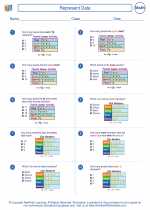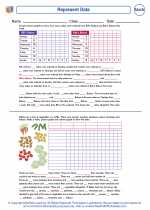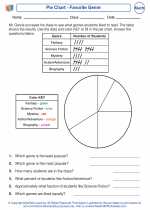Quadratic Equations
A quadratic equation is a second-degree polynomial equation in a single variable x.
The general form of a quadratic equation is:
ax2 + bx + c = 0
Where x represents the variable, and a, b, and c are constants with a ≠ 0.
Ways to Solve Quadratic Equations
- Factoring: If the quadratic equation can be factored, setting each factor equal to zero will give the solutions.
- Quadratic Formula: The quadratic formula can be used to find the solutions for any quadratic equation.
- Completing the Square: This method involves manipulating the equation to create a perfect square trinomial, from which the solutions can be found.
- Graphing: Graphing the equation and finding the x-intercepts can give the solutions.
Important Concepts
- Discriminant: The expression b2 - 4ac, which determines the nature of the solutions.
- If the discriminant is positive, the equation has two distinct real solutions.
- If the discriminant is zero, the equation has one real solution (a repeated root).
- If the discriminant is negative, the equation has no real solutions (two complex conjugate solutions).
- Vertex: The vertex of the parabola represented by the quadratic equation is located at the point (h, k), where h = -b/2a and k = f(h).
- Axis of Symmetry: The line x = -b/2a, which passes through the vertex of the parabola and divides it into two symmetric halves.
Practice Problems
Solve the following quadratic equations using the method of your choice:
- 2x2 - 5x + 2 = 0
- x2 + 4x + 4 = 0
- 3x2 - 7x - 6 = 0
Applications
Quadratic equations are widely used in physics, engineering, economics, and many other fields to model various real-world phenomena such as motion, trajectories, optimization, and more.
.◂Math Worksheets and Study Guides Fourth Grade. Represent Data
Study Guide Represent Data
Represent Data  Worksheet/Answer key
Worksheet/Answer key Represent Data
Represent Data  Worksheet/Answer key
Worksheet/Answer key Represent Data
Represent Data  Worksheet/Answer key
Worksheet/Answer key Represent Data
Represent Data  Worksheet/Answer key
Worksheet/Answer key Represent Data
Represent Data  Worksheet/Answer key
Worksheet/Answer key Represent Data
Represent Data  Worksheet/Answer key
Worksheet/Answer key Pie Chart Budget
Pie Chart Budget  Worksheet/Answer key
Worksheet/Answer key Pie Chart - Favorite Genre
Pie Chart - Favorite Genre 

 Worksheet/Answer key
Worksheet/Answer key
 Worksheet/Answer key
Worksheet/Answer key
 Worksheet/Answer key
Worksheet/Answer key
 Worksheet/Answer key
Worksheet/Answer key
 Worksheet/Answer key
Worksheet/Answer key
 Worksheet/Answer key
Worksheet/Answer key
 Worksheet/Answer key
Worksheet/Answer key

The resources above cover the following skills:
Measurement and Data (MD)
Represent and interpret data.
Supporting Standard: Make a line plot to display a data set of measurements in fractions of a unit (1/2, 1/4, 1/8). Solve problems involving addition and subtraction of fractions by using information presented in line plots. For example, from a line plot find and interpret the difference in length between the longest and shortest specimens in an insect collection.
See the skills and knowledge that are stated in the Standard.